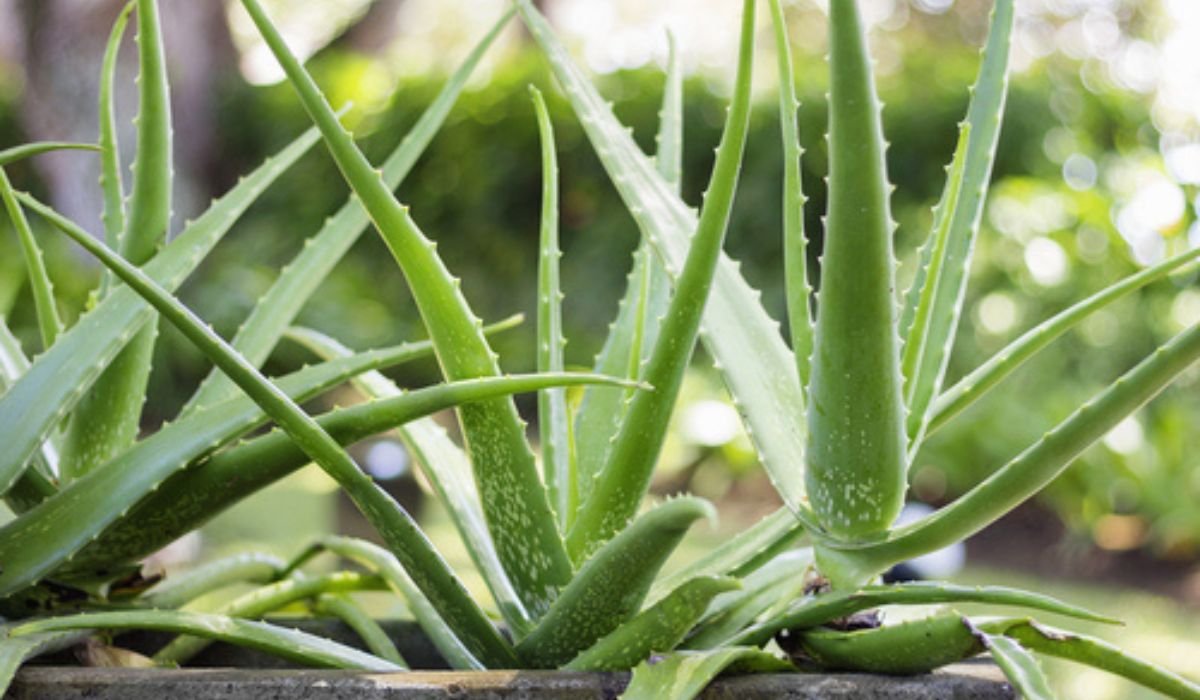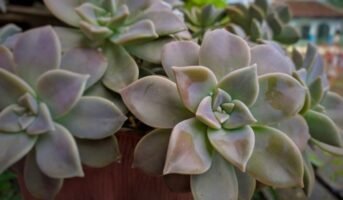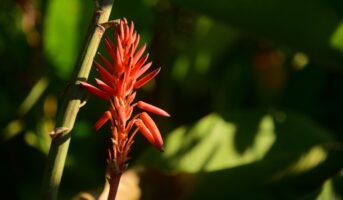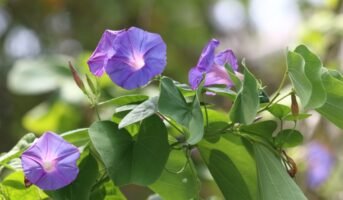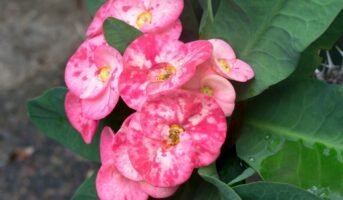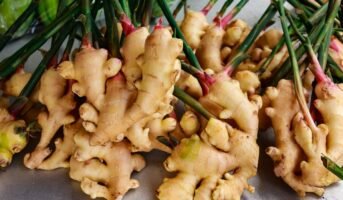The aloe vera plant is pretty much a household name. There is a definite possibility that you or someone you may know definitely has an aloe vera plant in their household. This is because of the aloe vera plant’s unending list of benefits and uses, combined with its ability to grow in almost any condition.
What is the botanical name of Aloe Vera?
Used primarily for its dermatological benefits, the aloe vera plant has over 300 species in its family. The botanical name of Aloe Vera is Aloe barbadensis miller. It is a tropical succulent that has a very distinctive set of features like long, thick fleshy leaves with serrated edges that grow out of a basal rosette.

Source: Pinterest
Also, if it is looked after properly, it will bloom a yellow or spiky red flower in some cases. Although, this might take years as young aloe vera plants take years to mature and produce flower stalks. Comparatively speaking, the aloe vera plant is still a fast-growing succulent that reaches maturity in 3-4 years. Once mature, it can be propagated easily, and an aloe vera plant is one of the most creative gifts you can gift a loved one.
See also: Are chia seeds worth all the rage?
Aloe Cera plant: Key facts
| Common name | Aloe vera |
| Scientific name | Aloe barbadensis miller |
| Family | Asphodelaceae |
| Plant type | Succulent, perennial, herb |
| Mature size | 1-2.5 ft. tall, 6-12 in. wide |
| Sun exposure | Partial-full |
| Soil type | Sandy |
| Soil pH | Acidic |
| Nativity | Africa |
| Flower colour | Yellow, red |
see also: all about Pruning
Aloe vera plant: Types
While there exist about 500 different species of the aloe vera plant, only three species from these are grown commercially.
- Aloe polyphylla (spiral aloe):

Source: Pinterest
This is an incredible succulent plant that is often found growing in spirals and bears orange flowers.
- Aloe aculeata:

Source: Pinterest
This is a mid-sized aloe plant that grows thick, fleshy leaves with thorns or teeth on either side. It blooms with yellow or orange-coloured flowers and is found in Africa.
- Aloe ciliaris:
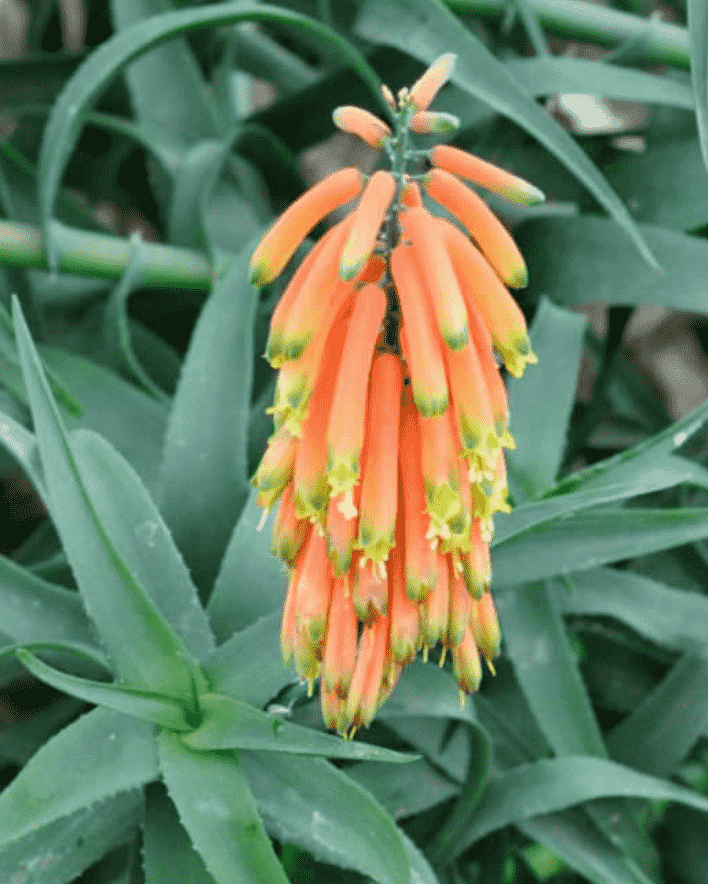
Source: Pinterest
This species of aloe is a succulent vine and has stems that grow up to 30 feet long. It bears bright orange tube-shaped flowers and is also planted as a fire block due to its high heat tolerance and high moisture content.
Aloe Vera plant: How to grow?
The Aloe vera plant is best grown from propagating the pups it stems off. Mature Aloe vera plants often grow as many as 20 pups each growing season which can be later used to spawn newer aloe vera plants.
Fill up a pot with potting mix and locate pups at the base of the mother plant. Pry a pup off using a trowel and sever the taproot that connects it to the mother plant. The pup should be laid dry near a sunny window to help it heal any broken cuts.
After a few days, plant the now-ready pup in the pot and cover any roots that may be visible. Leave the fans out and backfill the soil just below the main crown. Water the plant and place it near a sunny window. Take care of the plant, and it will grow in 3-4 months.
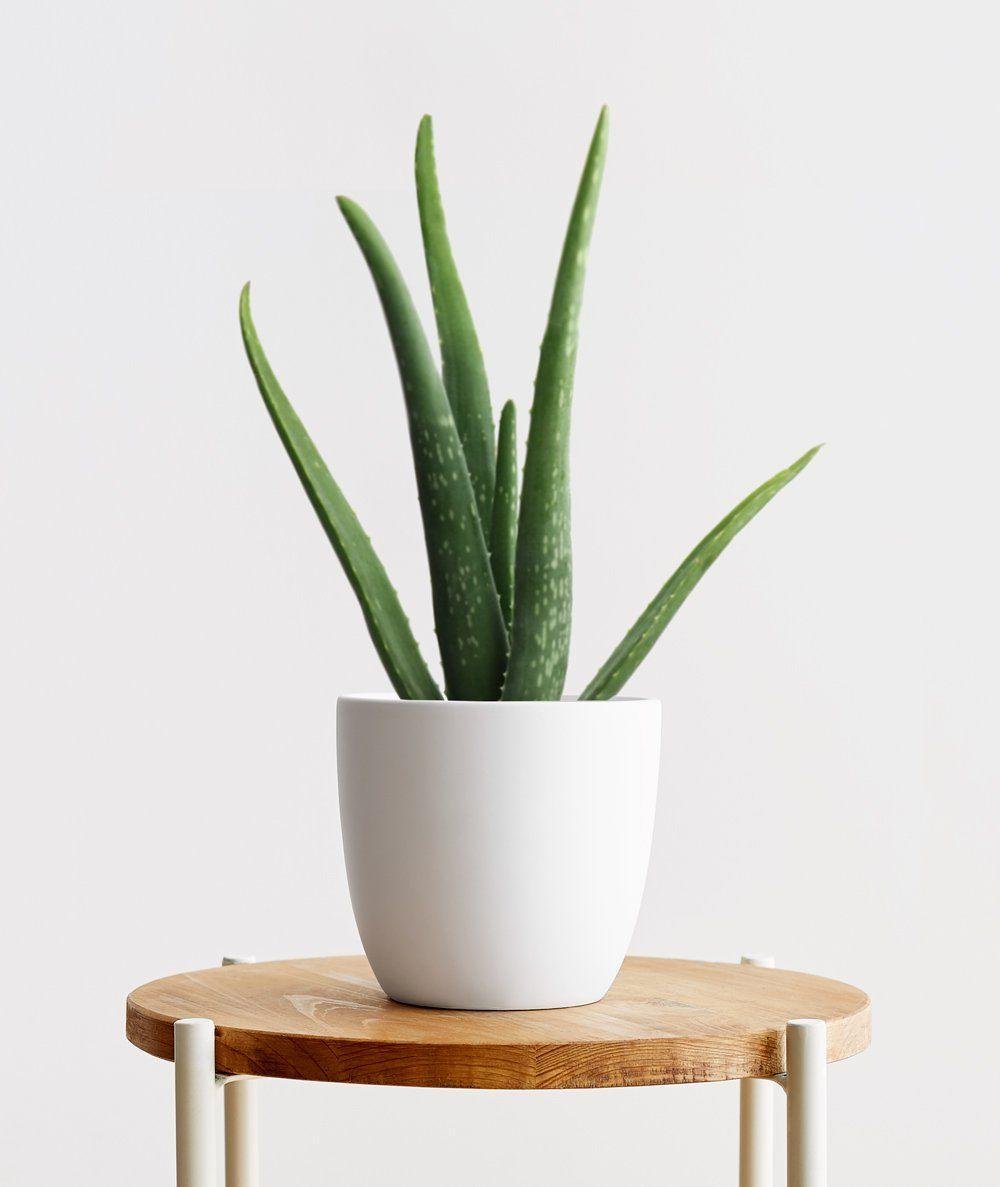
Source: Pinterest
Source: Pinterest
Aloe vera naturally grows in tropical, arid, and semi-tropical regions, so growing an in-house aloe vera in these conditions may be favourable to the plant. Aim for a temperature between 55-85 degrees Fahrenheit and avoid keeping it outdoors at night if the temperature is bound to fall below 40 degrees Fahrenheit. 40-45% humidity works best for the aloe vera plant, and it can thrive even in dry conditions.
See also: What are Sabja seeds and how beneficial are they for you?
Aloe vera plant: Maintenance
The aloe vera plant is one of those plants that need a little more looking after during its initial growing years, but once they’ve grown past that phase, it can do well on its own and with minimal effort.
Fertiliser
Through years of evolution, the aloe vera plant has adapted to growing in poor soil conditions. It grows through a ton of various types of soils and can tolerate nutrient-deficient soil very smoothly. For the most part, it doesn’t require any sort of fertilisation. That being said, a potted aloe vera plant should be fed a 10-40-10 liquid houseplant fertiliser at least once a year to maintain its foliage and health. Dilute this solution to half its strength and apply it directly to the roots once a year. Outdoor aloe vera plants don’t need any sort of fertilisation.
Pruning
Prune the aloe vera plant only when the leaves are shrivelled or dead. Environmentally damaged leaves are an exception too. In either case, the outermost tip of the leaves of your aloe vera plant might go brown or black and may need to be cut off in order to let the leaf grow healthier. Use clean garden shears and cut off only the affected tips. It is strongly advised to only cut off the leaves from the base or the top and never from the middle.
see all about: pruning
Soil
Plant the aloe vera in soil with a good amount of drainage. You can use a cactus potting mix to guarantee that it is well drained. If you don’t have a cactus potting medium with you, traditional growing soil with coarse sand and perlite will bear similar results. It is preferable to keep the soil slightly acidic throughout the plant’s life cycle, but neutral or slightly acidic soil is tolerable as well.
Sunlight
The aloe vera plant needs a lot of natural light to survive. If planted outdoors, make sure it receives at least 6 hours of sunlight every day. Indoor aloe vera should be placed near a sill or a deck in a position where it receives plenty of indirect light. Direct light can burn the plant, and on the contrary, lack of light will cause the plant to droop.
Water
Water the plant regularly with regular intentional dry spells. This means that you will have to let the soil dry out completely for a while between watering sessions. Be careful you don’t leave the plant dry for too long, as it can harm the plant and even kill it. The aloe vera plant is dormant in winter and doesn’t require any sort of watering. If you reside in a place that receives plenty of rainfall, make sure to use gravel or pebbles to help with the drainage.
What are the active ingredients in Aloe Vera leaves?
Aloe vera has as many as 75 active ingredients like vitamins A, C and E which are antioxidants, vitamin B12, choline folic acid. It also has enzymes, minerals, sugars, lignin, saponins, salicylic acids and amino acids.
Aloe vera plant: Uses and benefits

Source: Pinterest
Aloe vera is primarily used to treat skin problems like acne, marks, dark spots etc., but it also has several medicinal benefits. It is used to treat ailments like psoriasis, herpes, dandruff, burns, sores, acne and anal fissures. It also has laxative properties and helps lower blood sugar levels.
You can extract aloe directly from the plant as well. Various parts of the plant like the peel and the flesh can be used and have their own respective benefits, most of which are dermatological.
Toxicity
While most homegrown cultivars are not toxic, some wild aloe vera species can be potentially toxic to users.
FAQs
How to use aloe vera leaves to treat acne?
The leaves of the aloe vera plant are peeled open, and then the flesh of the plant is used to treat various issues like acne, dark spots and minor cuts and bruises.
Is the aloe vera plant prone to pests and diseases?
The aloe vera plant is generally safe from invasive pests and diseases but can't be bothered by the likes of mealybugs and aloe mites. Use a diluted solution of isopropyl alcohol to get rid of these creatures. The aloe vera plant is also prone to diseases like root rot and aloe rust, which can usually be resolved by the plant itself.
How long can the aloe vera plant live?
The aloe vera plant can live for up to 12 years.
Housing News Desk is the news desk of leading online real estate portal, Housing.com. Housing News Desk focuses on a variety of topics such as real estate laws, taxes, current news, property trends, home loans, rentals, décor, green homes, home improvement, etc. The main objective of the news desk, is to cover the real estate sector from the perspective of providing information that is useful to the end-user.
Facebook: https://www.facebook.com/housing.com/
Twitter: https://twitter.com/Housing
Email: [email protected]
